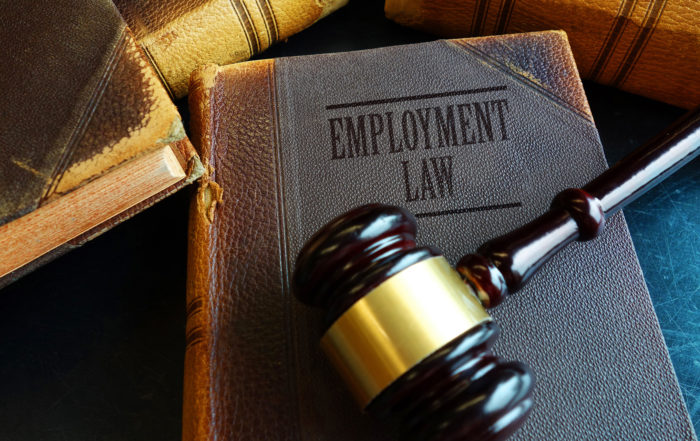Personal Liability of Employer for Wrongdoing When Personal Injury Alleged of His Independent Contractor
Personal Injury in South Africa
Personal Liability of Employer for Wrongdoing When Personal Injury Alleged of His Independent Contractor
The exclusion of an employer’s vicarious liability for the wrongdoing of his independent contractor underscores the parallel, yet distinct, rule that an employer may, in appropriate circumstances, be personally liable for the wrongdoing his independent contractor on the basis of his ( the employer’s ) own fault in relation thereto, ie, as a matter of ordinary delictual liability. This latter rule was the primary focus of enquiry in the Langley Fox case. The majority judgment of Goldstone AJA summed up the basis of an employer’s personal liability as follows ( at 12 H ):
In Siman & Co (Pty) Ltd v Barclays National Bank Ltd 1984(2) SA 888 (A) Corbett JA said
the following in a minority judgment ( at 914 in fine ):
“In my opinion, it follows from the a foregoing that in a case such as the present, there are three broad questions which must be asked, viz:
(1) would a reasonable man have foreseen the risk of danger in consequence of the work he employed the contractor to perform? If so,
(2) would a reasonable man have taken steps to guard against the danger? If so,
(3) were such steps duly taken in the case in question?
Only where the answer to the first two questions is in the affirmative does a legal duty arise, the failure to comply with which can form the basis of [13] liability. With respect, in Dukes v Marthinusen (supra ) there are some dicta which tend to obscure the second crucial question.”
The minority judgment of Botha JA added the following refinement of the second element
for an employer’s liability, as stated in the majority judgment ( at 17 F ):
“In my view, when the liability of an employer for the consequences of the negligent conduct of his independent contractor is in issue, a facet of the enquiry into the relevant circumstances which requires particular scrutiny is the state of the employer’s knowledge relating to the actual existence of a dangerous situation at the very time when harm befalls a third party. The importance of such an enquiry may be illustrated by means of contrasting two hypothetical examples. In the first, the employer is present when the contractor is in the process of executing the work, perceives that the contractor has not taken any precautions against harm resulting from the danger inherent in it, and does nothing to remedy the situation. In the second, the employer is unaware of the fact that the contractor has commenced the execution of the work and consequently does not know that a dangerous situation has been created by the contractor’s failure to take the requisite precautionary measures. In the first case, all other things being equal, the employer can be faulted for having failed to act as a reasonable man would have done. In the second case, however, the employer cannot be so faulted unless it is made to appear that he ought to have made it his business to know when the work would be commenced and to see to it himself that, from the outset, the requisite precautions were taken. In assessing whether or not a reasonable man in the position of the employer would have made it his business to have the knowledge and to take the action that I have mentioned, one must be on one’s guard, I consider, bearing in mind the remarks of Grueber [18] quoted above, not to cast too heavy a burden on an employer. In this connection a careful evaluation is required of the nature of the potential danger and of the precautions required to avert it.” ( own emphasis )
The aforesaid further requirement, introduced by the minority judgement, was embraced in Minister of Community Development and Another v Koch 1991(3) SA 751 (AD) at 762 F ff. See also Stein v Rising Tide Productions CC ( supra ), especially at 208 J ff for further authority in this regard..
The three-fold test for personal liability of an employer, as expressed in the majority judgment in the Langley Fox case, at a first blush seems to be indistinguishable from the ordinary test for negligence, as classically expressed in Kruger v Coetzee 1966(2) SA 428 (AD) at 430 E. That may appear to imply that in the circumstances presently under discussion the employer’s personal liability is premised solely on negligence. However, that cannot be so. Because it is plain that the employer’s potential liability is ordinary delictual liability, it must necessarily, in instances where a wrongful omission is sought to be ascribed to the employer with reference to the conduct of his independent contractor, flow from the same legal duty / wrongfulness analysis that has become clearly established in South African law in relation to all delictual omissions ( as briefly discussed above ). In other words, when a wrongful omission is sought to be ascribed by a plaintiff to both an independent contractor and his employer, ie, as having caused the same loss, it will be necessary for the trial Court to apply the general criterion of reasonableness separately to each defendant, to establish the discrete legal duties ( if any )
that rested upon them to act affirmatively to prevent the plaintiff’s loss. Because the employer is not vicariously liable for the wrongful omissions of his independent contractor, this dual application of the general criterion will almost inevitably yield differing results, namely, that while a legal duty so to act may have rested upon the independent contractor it did not rest upon his employer. An obvious example of how such divergent outcomes may occur flows from the qualifying remarks of Botha JA in the Langley Fox case:
The employer will be subject to a legal duty to prevent harm to a third party at the hands
of his independent contractor if he ( the employer ) knew of “the actual existence of a dangerous situation at the very time when harm befalls a third party”, but not otherwise.
It has been emphasised that too stringent a legal duty ought not, in the circumstances presently under discussion, to be imposed upon an employer. The effect of doing so might covertly introduce vicarious liability of an employer, thus eroding the distinction between an “employee” and an “independent contractor” in much the same way as was discountenanced by Ponnan JA in the extract from the Chartaprops judgment quoted above. Thus, towards the end of his judgment, having with reference to the Langley Fox case acknowledged that an employer might be personally liable for the wrongdoing his independent contractor, Ponnan
JA expressed the following views ( at 206 B, para [48] ):
“[48] Chartaprops was obliged to take no more than reasonable steps to guard against foreseeable harm to the public. In this regard, it is well to recall the words of Scott JA in Pretoria City Council v De Jager [ 1997 (2) SA 46 (A) ]:
‘Whether in any particular case the steps actually taken are to be regarded as reasonable or not depends upon a consideration of all the facts and circumstances of the case. It follows that merely because the harm which was foreseeable did eventuate does not mean that the steps taken were necessarily unreasonable. Ultimately the inquiry involves a value judgment’.”.”
Finally, attention is drawn to the recent judgment of Pienaar and Others v Brown and Others 2010(6) SA 365 (SCA), a matter in which the Court, applying the principles expressed in the Langley Fox case, found that an employer was not liable for the wrongdoing of an independent contractor ( in that matter a sub-contractor to the principal contractor ). The facts of the case are comparable to those in casu, because it also involved multiple defendants who were party to the execution of a building contract.
MALCOLM LYONS & BRIVIK INC.
Personal Injury, Medical Malpractice and Labour Law
The current position on objections to the con/arb process
Con/arb process - The Commission for Conciliation, Mediation[...]
Out of time? Think again – The CCMA and its rules
By Lara Keil (Candidate Legal Practitioner) under the[...]
RAF’s lodgement requirements: Claimants further prejudiced
By Lara Keil (Candidate Legal Practitioner) under[...]













